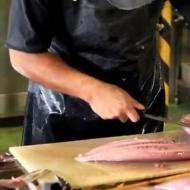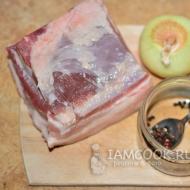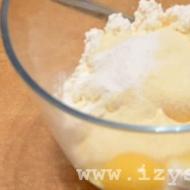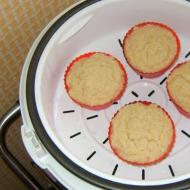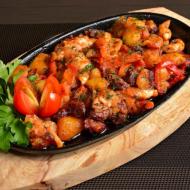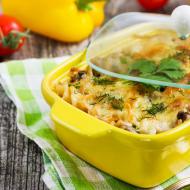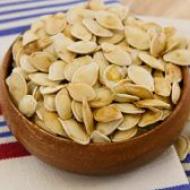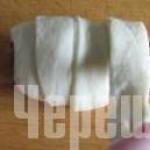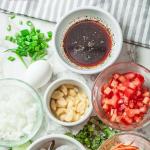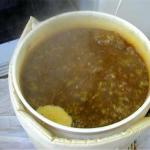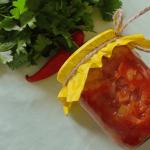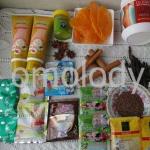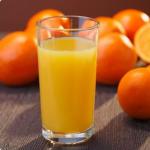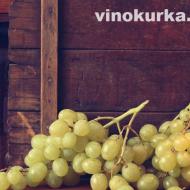
How to make crafts from salt dough. Ingredients and tools for crafts made from salt dough, modeling methods and methods for preserving products. #4 Fridge magnet Dough snowman step by step with photo
Modeling is a great way to develop fine motor skills in children. However, kids love to taste everything, so traditional modeling materials such as clay or plasticine are often not suitable for activities. There is an excellent alternative - salt dough: it is very easy to sculpt from it, it is much softer and more pliable than plasticine, and at the same time, it is absolutely safe for the child.
Any product can be made from this material. Young children (from one and a half years old) can, under your guidance, try to create simple figures from salt dough, and an older child can try to create any crafts, souvenirs or toys that their imagination and skill are capable of.




How to make salt dough?
To top off all the advantages of this modeling material, it is also very affordable, as you can quickly make it in your kitchen.
There are many recipes for making salt dough, so everyone has the opportunity to choose the most convenient and simple one for themselves.
Here's one way:
- take a glass of salt (about 200 g), add 2 glasses of flour, and diluting with water (more than half a glass), knead the dough;
- You will determine the degree of its readiness as you go: if the dough sticks to your hands and stretches too much, add a little more flour, and if it crumbles, it means there is not enough water;
- try rolling a ball and making several indentations in it (the finished dough will hold its shape well without spreading);
- when kneading, it is recommended to add a little (tablespoon) vegetable oil;
- for sculpting relief figures, add 2 tablespoons of starch;
- Wrap the well-kneaded mass in plastic and put it in the refrigerator for several hours;
- toys made from salt dough can be painted ready-made, or you can prepare colored dough at once (make it in several separate containers and add food coloring, instant coffee, beet or carrot juice, acrylic or gouache paints, etc. when kneading.
You can watch special master classes if you are going to sculpt for the first time.
The goal of modeling classes for children should be to develop an interest in this art, to become familiar with all the properties and capabilities of the material: the dough can be torn, crushed, flattened, rolled, crumbled, and dried. Teach your child to come up with stories, make toys or figurines of current characters for them, and combine them into whole large compositions. This will help you not only develop and improve your children’s fine motor skills, but will also develop their imagination, imagination, and speech.
Making simple crafts with kids
You should sculpt on a special modeling board or baking sheet. Also prepare a small rolling pin for rolling out the dough, a brush (you will sometimes have to moisten the dough with water), stacks - sticks for working with plasticine or dough, other details, depending on the direction of your work (paints, molds, decorations, etc.).

If you are just starting to work with a small child, choose the simplest patterns and master classes so that it is easy and interesting for children to sculpt products.
First, you can do something yourself, demonstrating it to the child, then perform the actions with his hand, and then let him try to create a toy from salt dough with his own hands.

Together with your child, create a fairy tale about your character. For example, it is very easy to make a small cute caterpillar or even its whole family, and then play with them.
- Show your child how to make a caterpillar: you need to pinch off small pieces of dough and roll them into balls of different sizes.
- For the head of the product you will need a large ball, and for the body - several smaller parts. The final appearance of the craft depends on how many balls you get and what diameter they are.
- Then you can connect all the balls together. To make the elements stick to each other better, moisten them with water at the joints.
- The caterpillar's face can be drawn or sculpted, and the antennae can be made from cut matches.
- Now the product needs to be dried. Some people prefer to do this in natural conditions. This method will take you about 3-4 days. Also, figurines made from salt dough can be dried in the oven: if it was preheated to 55-80°C, then you will need to keep the product there on a baking sheet with parchment paper for about an hour, and if you put the figurines in a cold oven, then set the temperature to 150 °C and, after drying it a little, leave the crafts in the oven while it cools.
- When the toy is dry, color it with your child. This can be done with gouache, acrylic paints or watercolors.
In the same way, other toys are very easily created - octopuses, snakes, cats, fish, birds, vegetables and fruits. You can cut out blanks from cardboard, and then trace them on the dough.








A very simple master class on making salt dough figurines as Christmas tree decorations will also be available for little children.
- Prepare several colorful pieces of dough.
- Roll them out well and, using a variety of cookie cutters, cut out the shapes you need.
- Using a tube or stick, make holes in the figures so that they can later be hung by a thread or ribbon on the Christmas tree.
- If you make a lot of holes, you will get real openwork figures.
- Products can also be decorated with beads (only plastic ones cannot be dried in the oven), various cereals, buttons, shells, pieces of bugles, etc. Sprinkle the finished toy with sparkles (on a layer of glue or varnish).
- Figures painted with permanent markers or decorated with all kinds of stamps (for children's creativity, of any texture) also look very beautiful.
As a memorable home souvenir, you can make prints of the child's feet and hands, and on the back side sign how old the baby was.

Making more complex toys
There are master classes that show that you can create more complex toys, figurines, or even entire compositions with your own hands. For example, try with older children to make a cute hedgehog or the whole hedgehog family.
- Since you will be working on a three-dimensional figure made of salt dough, you will need some kind of ball to create the body of the hedgehog. You can take wood, plastic or even foil, the main thing is that it is very dense.
- Cover it well with dough so that there are no holes anywhere.
- The eyes and nose of the hedgehog can be made from dough or you can use any available means (for example, large peppercorns).
- Using nail scissors, form needles on the back of the hedgehog (do row by row in a checkerboard pattern).
- You can also make fruits that your forest dweller will carry on his back.
- Then you should dry the hedgehog and decorate it. Cover the piece with clear nail polish to prevent the paint from fading and the appearance of the figurine from deteriorating over time.
In the same way you can make a sheep, an owl, and any other three-dimensional toy.
Master classes will help you create even entire paintings from salt dough, which will become not only an excellent decoration for your home, but also a wonderful original souvenir as a gift. It is better to sculpt pictures on fabric, foil or painted cardboard. When the craft is completely dry, paint it and varnish it.
The history of modeling from salt dough goes back many centuries. In ancient Egypt, it was from this material that figurines of numerous deities were sculpted; in Germany and Scandinavia, it was generally believed that a “bread” amulet was capable of protecting the owners of the house.
Since ancient times, Slavs all over the world have made entire paintings from dough. Moreover, it was not customary to decorate them; the color scheme was achieved through different types of dough. And in Rus', figurines made from this material were given to each other on the day of the autumn equinox. It was believed that in the house where this figurine stood there would always be bread and salt.

On our website you will find a large number of photos of various dough crafts. They can be dedicated to a specific date or correspond to any theme. Here you will find many ideas for your own creativity, as well as for modeling with your kids.









Features of working with salt dough
Dough is a very pliable material, even a child can learn to sculpt from it. At the same time, you will be sure that the test does not contain harmful dyes and allergens.

However, there are some nuances that you need to know so that your product is not only beautiful, but also stored for a long time and does not lose its appearance.

Let's look at them in detail:
Salt dough is quite easy to prepare; it is important to maintain the proportions. An important factor when working with children is the fact that all the details of the future masterpiece can be eaten.

To knead the dough for modeling, take: 500 grams of flour, 200 grams of salt and 200 ml of water. Please note that the water must be at a cold temperature. It is customary to take well-ground salt for the material. "Extra" is best.

The second recipe for modeling is also used often, but unlike the first, it contains an inedible component. Working with this composition is recommended for older children or adults. Take the following ingredients: white flour - 500 grams, cold water - 200 ml, PVA glue - 2 cups.

If you want to make dough of the desired color, but your craft will be monochromatic, you can do two things: either initially dissolve the dye in water, or add a certain amount of gouache to the dough.

Drying finished products
Beautiful, bright and unusual dough crafts will not lose their attractiveness if they are dried correctly. This can be done in two ways:


The advantage of this method is that it is absolutely safe when drying. A child of any age can participate in this process independently. The disadvantage is the relative duration of the procedure. Drying may take several days.

You can speed up the process by using an oven for this purpose. The baking sheet is covered with dry baking paper, and the figures are laid out on top.









Craftsmen use different temperature ranges, however, for beginning needlewomen it will be enough to preheat the oven to +100C. During the baking process, it is important to ensure that our crafts do not burn.

Coloring finished figures
This is a very exciting activity. We will give you some tips on how to avoid mistakes:
- for painting “bread” figures, any water-soluble paint, from watercolor to acrylic, is suitable;
- the color does not apply evenly to the test surface, so first coat the product with white or flesh color;
- each new color must be applied separately, then you need to wait until it dries completely, the next color can be applied only after that.

Some tricks that experienced craftsmen share with you will help you make crafts from dough of any complexity:
In some cases, you can prepare a little dough with a more liquid consistency. With its help, you can make a thin coating of the main part of the product. For example, “spread” a sandwich or pour icing on a cake.


During the sculpting process, check the size of the product so that it matches your idea.

Connecting the individual parts of your craft is quite simple. Use a wet brush and simply “glue” one part to the other.

To prevent the craft from losing color, open the dried product with colorless varnish. If your craft will act as a toy for your baby, make sure that the varnish is harmless.












What products can be made
You can find many ideas for making wonderful DIY dough crafts on the Internet. Crafts figures are often found in nature and the world around you. Perhaps you will become interested in creating Slavic symbols. Or maybe you will like to create abstract compositions.

On our website, you can easily find detailed step-by-step instructions for making dough crafts. This process is creative, which means it creates a large field of activity for your imagination.


Salt dough beads
So that you can feel the texture of the material and understand exactly how to learn how to sculpt dough yourself, we will show you a master class on simple dough crafts.

Even a child can make beads, but it will be useful for an adult to feel the process of working with the material:
- take pre-prepared dough of the same or different colors;
- roll into uniform balls;
- if desired, you can try to make beads of different shapes and sizes, but for this you will have to practice;
- when the balls are ready, take a toothpick and carefully pierce the through holes;
- Without removing the toothpick, dry the beads in their natural environment;
- during drying, do not forget to turn your figures from side to side;
- carefully remove the dry figures from the toothpick;
- then we string the beads onto a stiff thread or cord.

Your beads are ready. If you want to experiment, try painting the finished beads with a brush, and then varnish them.

You passed your first modeling experience with success. I hope this will serve you for a long and productive career in this direction. Visit our website, learn, follow step-by-step instructions and watch master classes. Good luck! See you soon.

Photos of dough crafts







Working at home with children and developing them is a pleasure if the activity is exciting and has a lot of advantages. Crafts made from salt dough are just what you need, because it is a pleasant pastime for mom and a useful exercise for little children’s hands. In addition, modeling from salt dough is very affordable: the ingredients can be found in every home.
How to make salt dough
There are many recipes for such a dough, and to make a plastic mass with your own hands, choose the one that suits you, but first read some clarifications:
- flour - without additives (not “pancake”);
- salt – fine, “Extra” (not rock, not iodized);
- if the dough is colored, it needs to be divided into parts during the process;
- dyes - beet juice, spinach, raspberry, blueberry juice, dry food coloring, gouache.
Recipe for simple and colored dough
Ingredients for a simple test:
- 200 gr. flour;
- 200 gr. salt;
- 125 ml ice water.
Preparation:
- Mix flour and salt in a large bowl.
- Add water in small portions, kneading the dough until smooth.
- Place it in a bag and put it in the refrigerator to rest for half an hour.
Ingredients for color dough:
- flour - 300 gr.;
- salt - 300 gr.;
- cold water - 200 ml;
- sunflower oil - 1 tbsp. spoon;
- dyes.
If the dye is liquid:
- mix flour with salt;
- add vegetable oil;
- add water in portions, knead the plastic dough;
- divide the mass into several parts and mix the dye into each part, knead until a uniform color is obtained;
- put in the refrigerator for 30 minutes.
If the dye is dry:
- divide all ingredients into equal parts;
- each dye must be dissolved in approximately 1-2 tablespoons of water from the total volume;
- mix flour, salt, butter, add water and dye, knead thoroughly;
- We do this with each color;
- put it in a bag and put it in the refrigerator for half an hour.
Little tricks
Experienced housewives know that the more flexible the dough, the more elegant the crafts are. To do this, vegetable oil is added to the mass. It can be replaced with hand cream in the same amount.
For thin parts, you can make a special dough by adding a little starch or wallpaper glue: 1-2 tbsp. Mix dry spoons with water and add to the mixture of flour and salt.
The dough can be stored in the refrigerator for 1-2 weeks.
Testoplasty - where to start
Modeling from salt dough is an interesting process that will bring pleasure to everyone. The dough turns out so soft and pliable that you don’t want to let go of it. Therefore, for some needlewomen, dough crafts - testoplasty - are not just periodic activities with children, but a real hobby.
The youngest children can be introduced to dough as the first material for modeling. The dough is superior to plasticine because it is harmless to children. If a young researcher has tasted the mixture, do not worry, the dough does not contain foreign impurities or harmful additives. The child can do whatever he wants with the dough: knead it in his hands, pinch off pieces, roll it into balls, sausages, cut it with a knife. Such manipulations are useful for fine motor skills.
For children aged 2-3 years, simple crafts are enough. First, these are flat dough shapes that are cut out using cookie cutters, round lids, or a clay knife.
Children over 4 years old are ready for crafts that are more complex than just cutting with a shape. These can be Christmas tree decorations, three-dimensional animal figurines, vegetables, fruits, small toys as gifts for friends. Using salt dough, you can make wonderful counting material for teaching mathematics in games.
Salt dough toys for children
You can start with simple flat products. Let these be cookies for dolls or other toys; they will last a long time and fit perfectly into a toy tea party. These cookies can be made right away from colored dough, or they can be made from white dough and then painted. You need to glue small parts to the main product and connect the parts of the craft to each other using a damp brush: the parts to be joined are moistened with a brush and glued together.
"Ginger cookie"
Making salty cookies step by step:
- Roll out a small piece of dough with a rolling pin into a thin layer (5-7 mm) on the table;
- using cookie cutters or plasticine, cut out figures;
- we decorate the figures with seeds, beads, small buttons;
- You can place small dough decorations on top of the cookies - circles, hearts, flowers.
Application "Caterpillar"
Using the same principle, you can make an applique craft from colored dough on thick cardboard. We will need a sheet of cardboard, dough of different colors (yellow, pink, blue, green), a plasticine knife.
Execution steps:
- take pieces of yellow (head), pink and blue, roll out to a thickness of 7-10 mm;
- cut out circles from dough;
- grease the cardboard with PVA glue, glue the circles (the body and head of the caterpillar);
- cut out eyes and decorations for the caterpillar with a knife (beads, flowers, bows - optional);
- using a toothpick, draw a smile, make a pattern on the caterpillar (dots, notches, waves);
- glue the eyes and decorations onto the caterpillar’s body using a wet brush;
- cut out leaves and grass from green dough and glue them to the bottom of the cardboard;
- we complement the picture with elements to suit your taste: the sun, flowers in the grass, legs for a caterpillar;
- dry the craft in air or on a radiator.
Christmas decorations
On New Year's Eve, you can make your own Christmas tree decorations from salt dough. This is a reason to start a pleasant tradition - every year to make a new toy with your child. Even a simple toy in the shape of a star or a heart, or maybe some kind of animal (symbol of the year), decorated with beads, bows, and ribbon is already a masterpiece. You can make a snowman, a Christmas tree, or Santa Claus's mitten.
New Year's decorations are made on the same principle as cookies. We need to roll out the dough and cut out the shapes of the desired shape. If you don't have a stencil, simply cut out a sample from cardboard, place it on the dough, and then trace it with a knife. Don't forget to make a hole for the ribbon. Decorate the toy now or after drying, paint it, varnish it, and it will serve you for many years.
After the child has learned to decorate flat figures, you can begin to master three-dimensional figures. To make the crafts light, a ball of crumpled paper or foil is placed inside the product, which is “covered” with dough. This technique reduces drying time.
Before you move on to sculpting three-dimensional figures, teach your child to roll sausages, roll them into snails, make balls of different sizes, shape them into cubes, and flatten them into flat cakes. These basic skills are necessary for independently sculpting even the simplest animal figures.
Making a hedgehog
A hedgehog made from white salted dough can become the first three-dimensional figure made by a child’s hands. Let's sculpt a hedgehog step by step:
- We roll a ball out of foil, and then form the body of a dough hedgehog around the ball - a figure similar to a pear. If you don't put foil inside the body, drying will take a long time and the hedgehog will be heavy.
- We make eyes and a nose: you can take black dough for the nose and peppercorns for the eyes, you can make everything from white dough, and paint it with paint after drying.
- Now we take nail scissors (adult help is needed) and make needles for the hedgehog. We start with the head, then cut the dough all over the body to make sharp triangles. Just cut the dough and you will understand how to do it. If you do the rows in a checkerboard pattern, it will be more beautiful.
- When our hedgehog is dressed in quills, he can be sent to dry and then painted.
Let's make a lamb
You can try making a figurine of a lamb or sheep together with a 5-6 year old child. For this craft you will need the simplest white dough. Next, follow the step-by-step instructions:
- We make 4 balls - these are the legs of a lamb, and place them next to each other in the shape of a square.
- We make a flat cake from a piece of dough, roll a tight ball out of foil, and place it in this flat cake. We “tighten” the foil ball with mass, we get the body of our lamb, and then we put it on the legs.
- Roll a piece of dough into a ball - this is the head, glue it to the right place.
- We make eyes from two small koloboks and place them on the head.
- We roll two sausages, twist them into snails - these are the horns of a lamb, attach them to the head and body with a wet brush.
- We make ears: we fasten a dough cake at one end, we get something like a petal, we do the same with the second, glue them to the head.
- Finally, you need to make curls. To do this, roll many, many small balls (0.5 cm in diameter), place them on the body (back, sides), and flatten them with your finger. We do this until the entire craft is covered with “curls”.
- The workpiece is ready. All that remains is to dry it, paint it and varnish it.
Making counting material for children
Dough figures can be used for beauty, as a gift, or you can make counting material for doing math with children in a playful way. To do this, you will have to work hard and stick a lot of objects of the same shape, at least within ten, but how fun it will be later! You can sculpt vegetables, fruits, confectionery, toy sausages, loaves, mushrooms - whatever your imagination allows. Here are just a few examples.
Beads "Mushrooms"
In order to stick mushrooms, we take ordinary salted dough, roll the sausage, cut it into small cylinders - these are the legs of the mushroom. Now roll a small ball and press the dough from one edge, giving it a hat shape (you can use a pencil).
We make 10-15 such “leg-hat” pairs. Then we make a hole in the legs of such a size that a cord can fit through it; you can use a wooden kebabs skewer or an awl. We connect the caps with the legs with water, dry them in the oven, and paint them.
Such mushrooms can be strung on a string, or you can stick skewers into a piece of foam plastic or a cork board and string them onto the resulting rod.
Vegetables and fruits
Making vegetables or fruits from dough for games and activities is no more difficult than fungi. Choose crops according to your taste and performance capabilities: cucumbers, carrots, tomatoes, corn or even cabbage. You can use colored dough, or you can make it from white dough and paint it after drying.
Playing with your baby with such toys is a pleasure. You can feed the little animals, divide vegetables between them, and at the same time learn to count, put them in baskets - one more, the other less, you can come up with a lot of games. The most important thing is that the child will not even think that you are trying to teach him, because the game is fun.
From the dough you can make an educational lacing toy - this is a plate with holes into which the child inserts the end of a lace or rope. The toy is useful for developing fine motor skills.
Making such a craft is not difficult. Roll out a layer of white dough about 8 mm thick, take an oval-shaped object (for example, slightly flattened tape, but other options are possible) slightly smaller than your palm. Then, using a stick or pencil, we make an arc-shaped indentation, marking the ladybug’s head, and draw a straight line dividing its wings. Using a felt-tip pen cap, we make dot-holes - the excess dough falls into the cap, and we get a hole. 3-5 holes on each wing is enough. We dry the future lacing, then paint it. The toy is ready.
How to dry dough crafts
Each finished craft needs to be dried. How long it takes depends on the drying method. There are several drying options, choose the one that is convenient based on the size of the product or the availability of time.
Choosing a method for drying products:
- Air dry on a flat surface. It will take a long time to wait for the result; it takes a day for 1 mm of the thickness of the craft. Indentations may appear where the dough comes into contact with the surface, and sometimes you cannot turn the craft over. This option is suitable for small flat products.
- Drying on a radiator. This method is only possible during the heating season. Drying on a radiator takes less time than drying in air. The process takes from 1 to 2 days, depending on the thickness of the product.
- Baking in the oven is a relatively quick method, suitable for large products. You need to dry the craft on a baking sheet.
If there are sudden changes in temperature in the oven, the product may crack, so you need to start drying with the door open, gradually increasing the temperature:
- at 50 degrees - 1 hour with the door open;
- then at 75 degrees - 1 hour, the door is closed until drying is complete;
- then at 100-120 degrees - 1 hour;
- complete drying at 150 degrees – 30 minutes;
- open the door and leave the product to cool.
Combined drying is also possible. First, the craft is dried in the open air or in a radiator, and then in the oven. Suitable for large products.
The time and temperature for baking the craft in the oven depends on the color of the baking sheet and the thickness of the product. The article indicates the temperature for a light baking sheet; on a black one, make an adjustment - 20 degrees lower. The drying time is indicated for products up to 2 cm thick; if the craft is thicker, the time increases by about 1.5 times.
After drying, you need to lightly tap the product: if the sound is loud, the craft has dried. A dull sound indicates that the dough inside is wet, it needs to be dried, otherwise the craft will begin to collapse.
Painting of finished products
When the salt dough craft is completely dry, you can start painting it. Paints can be acrylic, watercolor or gouache.
Acrylic paints adhere well, do not smudge, and do not leave marks after drying. Watercolor and gouache paints need to be fixed with varnish after drying. You can also varnish any product if you wish - it is durable, beautiful, and looks more elegant.
It is convenient to sculpt flat, slightly convex figures from the dough. This property of the dough can be used to create bas-reliefs from it - convex images on a plane.
Material and tools: a board sprinkled with flour, a rolling pin, a knife, a sharpened pencil, a glass of water, a thin brush, a cloth or sponge, a little vegetable oil.
Dough: flour - 1 cup, salt - 1 cup, vegetable oil - a tablespoon, water - half a cup.
Mix all ingredients and knead well on a board to obtain a soft, homogeneous mass. Place the dough in the refrigerator for 2-3 hours. After this, you can sculpt from the dough. Place the remaining dough after modeling in a plastic bag and store in the refrigerator until next time.
The techniques for modeling from dough are the same as for modeling from plasticine.
Colored dough
Part of the modeling mass can be left unpainted (it has a light beige color), and part can be painted in different colors using gouache paints. If you sculpt from colored dough, you won't have to color the finished products. This is especially important if small children are sculpting, for whom it is still difficult to accurately hit a certain place with a brush.
You will need unpainted salt dough and a set of gouache or acrylic paints. Paints must be in a paste form. If they are dry, add a little water to the jars and wait until the paint softens.
Take a piece of dough in your left hand, such that it fits freely in your fist. Make a dimple in the middle of this piece. Using the index finger of your right hand, scoop a piece of paste from the jar and place it in this recess.
Close the edges of the dent so that the paint is inside.
Roll the dough ball up and down between your palms. Your hands will get a little dirty, but it doesn’t matter - the paint can be easily washed off with water. To prevent the dough from sticking to your hands too much, moisten them with sunflower oil.
After rolling out a long sausage, fold it in half and roll again. Repeat this operation until the “marble” stains disappear and the color becomes uniform. If after adding paint the dough becomes too soft, add a little salt and flour to it.
Prepare a set of colored mass in this way. Leave part of the dough uncolored - it will act as white. Store each color of dough in a separate plastic bag or in a yogurt jar with a tight-fitting lid.
Pieces of colored dough can be mixed, like paints, and achieve the shade you want. To do this, you just need to take two pieces of dough and knead them together until. until the dough is smooth:
Blue + white = light blue;
White + red = pink;
Blue + pink = purple;
Blue + yellow = green;
Yellow + red = orange;
Green + red = brown;
Green + blue = emerald.
And don't forget to stock up on flesh-colored dough! In order to make such a dough, you need to add a little yellow to the light pink one.
The excess colored dough that remains after modeling can be mixed into one lump so that it does not dry out. The result will be an “incomprehensible”, most likely gray-brown, color. But he can also be useful for something.
You can make paintings and toys from colored dough
|
Master class with step-by-step photos. Gift for February 23 “Medal for Dad” made from salt doughAuthor: Alena Yurievna Voronina, teacher, OCHU Skolkovo International Gymnasium Description of the material: This material will be useful for educators, additional education teachers, parents, designed for an audience of 2 years and older. Goal: Making crafts from salt dough. Objectives: 1. Improve sculpting techniques: rolling (circular, flattening) 2. Develop fine motor skills and coordination of movements... |
|
Master class on making New Year's toys from salt dough for children 4-7 years old Author: Elena Vasilievna Kraeva, teacher of the highest qualification category, MBDOU "Kindergarten No. 98 of compensatory type" in Syktyvkar Audience: This master class is recommended for teachers of preschool educational organizations, additional education teachers and parents to organize creative work with children aged 4-7 years. Relevance: New Year is a long-awaited holiday for many children and adults. ... |
|
Painting “Fish” made from salt dough. Master class with step-by-step photos Purpose: to introduce the possibility of using salt dough and making fish. Purpose: this craft will be a wonderful gift for loved ones, decor for the interior of your home, especially for the kitchen, it will give comfort and warm memories. This work will be of interest to: teachers, educators and parents, as well as for children of primary and secondary school age, at school and at home. Objectives: Educational: teach how to create... |
|
Master class on modeling dough for Valentine's Day for younger schoolchildren Author: Valentina Lyumanovna Useinova, additional education teacher, School 1420, Moscow Goal: making crafts from salted dough “Love-Carrot”. Purpose: this craft will be a wonderful gift or interior decor. Description: this master class will be interesting for teachers, educators and parents, as well as for children of primary and secondary school age, can be used for... |
|
DIY salt dough mouse. Master class with step-by-step photos Author: Natalya Ivanovna Markina, teacher of additional education, MBU DO Center for Extracurricular Activities, Art. Romanovskaya, Volgodonsk district, Rostov region. Description: This master class is intended for children of primary school age, for additional education teachers, and parents. Purpose: gift, interior decoration Purpose: making a mouse from salt dough Objectives: - cultivate neatness, ... |
|
DIY salt dough mouse. Master class with step-by-step photos Master class “Mouse” made from salt dough. Author: Olga Anatolyevna Kotenko, additional education teacher of MAUDO DTD and M, Kaliningrad region, Kaliningrad Description: the master class is designed for children of senior preschool and primary school age , their parents and teachers. The craft can be given to friends, family, or used to decorate the interior. Riddles about mice What kind of gray animal, Long tail,... |
|
Lamb made from salt dough. Master class with step-by-step photos. Author: Sorokina Natalya Valerievna, additional education teacher, MBOUDO "DDT" Navashino, Nizhny Novgorod region Description: the master class is intended for children of preschool and primary school age, as well as for parents and teachers who are interested in creativity . Purpose: can be given as a gift, to decorate the interior of a room. Goal: making a figurine of a sheep from salt dough Objectives: - teach how to make a three-dimensional figurine of a belly... |
|
Lesson on making a composition from salt dough “Penguins on an ice floe” Author: Sorokina Natalya Valerievna, additional education teacher MBOUDO “Palace of Children's Creativity”, Navashino, Nizhny Novgorod Region This lesson on modeling from salt dough is intended for children of primary and secondary school age. The methodological material is intended for additional education teachers and technology teachers who teach modeling to children. Goal: Modeling three-dimensional figures of penguins. Tasks: ... |
|
Modeling from salt dough with children of primary preschool age. Master class with step-by-step photos Author: Komissarova Natalya Gennadievna, teacher at MBDOU No. 196, Izhevsk. Description: this master class is intended for children of primary preschool age, educators, additional education teachers, parents and other creative people. Purpose: this craft can be used to decorate a New Year tree and as a gift. Purpose: making a gift from salt dough “Mitten... |
|
Candlestick made of salt dough for children 3-4 years old. Step-by-step instructions with photos Author: Komissarova Natalya Gennadievna, teacher at MBDOU No. 196, Izhevsk. Description: this master class is intended for children of primary preschool age, educators, additional education teachers, parents and other creative people. Purpose: The candlestick can be used to decorate the interior and as a gift. Goal: making a souvenir from salt dough. Tasks: - consolidate skills... |
|
DIY “Winter Hut” magnet made from salt dough. Step-by-step instructions with photos Author: Denis Safin, 11 years old, student of the creative association “Testoplastika”, MBU DO Center for Extracurricular Activities, Romanovskaya village, Rostov region, Volgodonsk district. Head: Natalya Ivanovna Markina, additional education teacher, MBU DO Center for Extracurricular Activities, Romanovskaya village, Rostov region, Volgodonsk district. Description: the master class is intended for school-age children... |
|
Salt dough pork. Step-by-step instructions with photos. Author: Natalya Valerievna Sorokina, additional education teacher, MBOUDO "DDT" Navashino, Nizhny Novgorod region Description: the master class is intended for children of senior preschool and primary school age, and can also be used in individual work with children with disabilities, for parents and teachers who are interested in creativity. Purpose: can be given as a gift in the form of a souvenir, used... |
The origins of dough modeling go back a long way. There is a legend that it was invented by Slavic cooks who were bored and had fun by creating interesting, edible figures from dough. In addition, this material is one of the cheapest and available to everyone. That’s why this type of creativity is popular in our time; everyone has flour, water and salt in their home. So, here are some interesting DIY salt dough crafts, with photos and step-by-step instructions.
Crafts made from salt dough
If you decide to touch this art, and testoplasty really is such, you need to learn in detail about the material from which you will sculpt. For beginners who like to make dough, it is worth noting that the recipe is very simple.
- Flour - one glass
- Salt - half a glass
- Water – 125 ml
It is worth remembering that salt is heavier than flour, so you need to use half as much of it!
To sculpt thin relief figures, you need to add PVA glue, or starch, or wallpaper glue to the dough. Optionally, one tablespoon at a time, pre-mix wallpaper glue with water. To make the kneading process easier, use a mixer; it will make it better and make it easier to work with your hands.
For modeling from colored dough, food coloring is used; if there is none, you can use regular paint. If you want a rich chocolate color, add a small amount of cocoa. Remember that when the dough dries, it loses its color saturation. Therefore, it is better to transfer the dye than not to transfer it. Coating the finished dough craft with varnish will make it brighter and more practical.
Advantages
- It is one of the cheapest and environmentally friendly materials.
- Doesn't get your hands dirty (although this is a relative statement)
- It is easy to work with, very flexible and allows you to make parts of any complexity.
"Piglet"
Let's look at the easiest way to sculpt.
To work you need:
- Salty dough
- Brush
- Stack
- Paints
- Toothpicks
How to do it
- Roll the dough into a ball and give it an oval shape, this will be the body of the pig.
- Make a second ball (head) and place it on the body using a toothpick.
- Make a small heel for the pig, a flattened ball with holes, you can make holes with the back of a pencil.
- Making ears is also not difficult; moisten the triangles with water and carefully attach them to the head.
- Do the legs like this, roll two sausages, make a small cut at one end, attach the legs to the body with the other end.
- Our piglet will sit in a basin, to do this, roll out a ball of dough and give it the appearance of a basin.
- Place the piglet in a basin and paint your craft.
- Let your masterpiece dry.
Master class on how to make a pig from dough step by step video instructions
Little secrets
Everyone has a garlic squeezer in their house. It can be used in work by passing the dough through it to create long curls. They can be used in the form of hair, wool for your crafts. Having a tea sieve at home will produce thinner vermicelli, for finer details of the craft.
A comb can also be used when sculpting; it will perfectly imprint a ribbed pattern on it.
"Candlestick"
Ingredients
- puff pastry
- eggs (for brushing)
- prunes
- chocolate
Cooking method
- Roll out the dough on the table. The thickness should not exceed 0.5 cm. Using a glass, cut out circles.
- Place in the middle of the prepared circles
filling. It can be prunes, dried apricots, jam, the main thing is that the filling is not liquid. - From each circle we form a star (gathering it up like a bag)
- Cut the edges with pastry scissors. And we bend each strip, turning them to the center.
- We form a flower and coat it with egg.
- Bake in the oven at 180 degrees.
- Decorating our flowers. You can put a little jam in the middle.
- We take a flat dish and, using melted chocolate, draw a stem and leaves for our delicious craft. We distribute the finished flowers in the right places on the plate and our unusual flower is ready.
"Delicious squirrel"
To prepare this craft you need to take:


